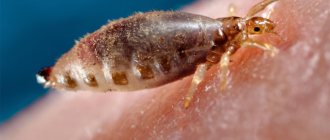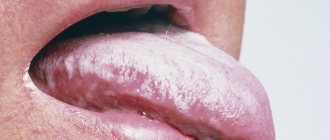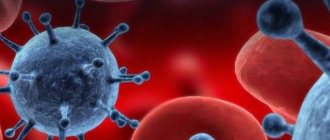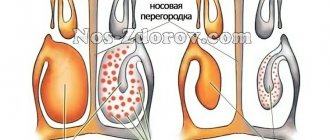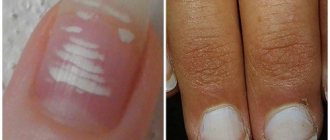In the human body, everything is very closely interconnected with each other. Sometimes it’s enough just to look in the mirror and it becomes clear that some problems have arisen. Even before going to the doctor, you can determine the presence of pathological processes in the body. This will be clearly evidenced by the condition of hair, nails, skin, and mucous membranes.
The most striking confirmation of this is spots on the tongue. They can be completely different in color, shape, and location. But every manifestation speaks of pathology in the body.
About the problem seriously
Most often, spots on the tongue portend the presence of a certain disease or malfunction in the functioning of the human body.
To effectively treat the disease, first of all, you need to find out what reasons could provoke this process. The variety of spots, which is quite extensive, is also important.
When regularly examining the oral cavity, special attention should be paid to the tongue. In the complete absence of disease, the tongue should have a pinkish color with a slight whitish coating.
In that situation, if there is a suspicion of a disease, the tongue may become covered with a dense layer of plaque and spots of different colors begin to form on its surface.
In most cases, plaque can be caused by poor oral hygiene. In such situations, all that is required is to pay attention to proper brushing not only of the teeth, but also of the tongue itself.
If the problem lies in poor nutrition, then getting rid of such plaque is quite easy.
If you find spots on your tongue, you should analyze everything. Perhaps such a symptom indicates a serious illness. In order to eliminate the risk of complications, it is important to seek medical help in a timely manner.
White spots on a child's tongue
A child who has no health problems has a pink, smooth tongue without grooves, irregularities or spots. The presence of spots on the baby’s tongue indicates the development of diseases. Before you panic, it is necessary to examine the child’s tongue to determine the nature, location and structural characteristics of the formations, which may look like:
- plaque accumulated on the surface and consisting of food, epithelial particles;
- growths of epithelial tissue of the oral mucosa;
- inflammatory process that has limited localization;
- benign tumor.
Thrush on the tongue in children is the most common cause
If the plaque is not removed after oral hygiene, the child may experience discomfort in the form of:
- burning;
- itching of the mucous membrane;
- sensation of any specific taste (iron, milky);
- tingling sensation in the tongue or throat;
- lack of air.
Having discovered a problem, it must be eliminated; to do this, you should seek a comprehensive consultation with a pediatrician. The cause of the appearance of such symptoms in children may be thrush; the localization of plaque, in this case, is not limited (it occupies the entire oral cavity).
Stomatitis on the tongue causes severe burning sensation
Thrush is caused by a fungus, and the oral cavity is a favorable place for its proliferation. The child's reduced immunity contributes to the occurrence of thrush.
Characteristic signs of thrush are the following symptoms:
- poor appetite or lack thereof;
- children have high nervous excitability;
- disturbing dream.
Stomatitis can cause spots to form on the tongue and mucous membrane. The disease is caused by a lack of vitamins in a growing body. The formation of stomatitis is provoked by the presence of:
- wound on the mucous membrane;
- food allergies.
The formation of flat growths on the tongue, like focal inflammations, is possible with leukoplakia - a disease of the skin and mucous membranes, characterized by the formation of a whitish film and spots.
The development of leukoplakia is provoked by injuries to the speech organ (cuts, microtraumatization of the surface of the tongue by teeth).
Regardless of the cause of the formation, it is necessary to consult a doctor in order to receive recommendations and prescribe treatment.
Classification of possible causes
As you know, tongue spots can have different appearances and shapes. In addition, in each case they acquire different shades, which play a decisive role in making a diagnosis and prescribing treatment.
Among the factors that provoke the development of the disorder, the following should be noted:
- Stomatitis . With this disease, spots can appear not only on the surface of the tongue, but also on the gums. Their sizes can be very different. In advanced cases, stains can cover the entire oral cavity, which will lead to serious consequences for human health.
- Measles . In the early stages of the disease, whitish spots form in the mouth and on the tongue.
- Chronic renal failure . The course of this disease quite often causes the appearance of a white plaque and the formation of small reddish dots on top.
- Cancer . When cancer is diagnosed, cracks gradually begin to form on the tongue, on which spots in turn appear. They can spread to the throat and gums.
- Using braces . If worn incorrectly, wounds may appear, which over time develop into tumors.
- Incorrect bite . The problem is not that dangerous, however, it can cause a large number of problems.
- Candidiasis . Quite often it is the female gender who have to face this problem.
- Failure to comply with the drinking regime . Not drinking enough fluid throughout the day leads to severe drying out of the mouth. As a result, small rashes and spots may appear.
- Recent infectious disease . Very often, spots can appear after or during a cold.
- Diagnosis of lichen planus on human skin.
- Hepatitis C.
- AIDS.
Localization and color picture
As mentioned above, spots can take on a variety of color shades. It is believed that the darker the color of the resulting stain, the greater the risk to human health. In addition, the texture and location of the spot on the tongue can indicate the severity of the suspected disease.
Localization and possible problem:
- if there is darkening at the tip , then it is necessary to take care of the health of the heart and blood vessels;
- a spot in the area that is located immediately after the tip indicates problems with the lungs;
- spots in the center warn of problems with the spleen;
- the presence of spots in the area after the middle of the tongue indicates kidney disease;
- spots that are located closer to the root warn of a malfunction of the intestines;
- if spots are found on the side , then it is necessary to check the condition of the liver and gall bladder.
If the spots are located on the side of the tongue, as in the photo, pay attention to the liver
Different colors - different problems
In addition, the following features of the appearance of stains should be taken into account.
The formation of white spots on the tongue may indicate the following pathological processes in the human body:
- gum disease;
- the occurrence of measles (the respiratory organs suffer greatly);
- stomatitis of the esophagus (its sign is difficulty swallowing food);
- a strong white coating and spots can be a harbinger of the development of a cancerous tumor;
- If red spots appear on the white plaque, then perhaps the kidneys are malfunctioning.
When a brown spot is found on the tongue, there is a possibility of developing the following ailments:
- food poisoning or dysbacteriosis is very often accompanied by browning of the tongue;
- improper use of medications;
- diseases of the lungs, liver or intestines;
- Addison's disease;
- onset of diabetic coma;
- mycosis;
- fungal infection of the mucous membranes.
Dark spots, even black, indicate the following diseases:
- alkaline-acid imbalance due to lack of consumption of fresh vegetables and fruits;
- prolonged course of colds and increased body temperature;
- development of chromogenic fungus in the oral cavity;
- diseases of the gastrointestinal tract;
- disruptions in the functioning of the gallbladder.
Red spots on the tongue become a precursor to the development of such diseases:
- development of an allergic reaction to food or medicine;
- lichen or viral disease;
- disturbances in the functioning of the stomach;
- disease of the circulatory system.
The appearance of any of the pathologies can lead to serious consequences for human health. In order to begin effective treatment, it is very important to establish the cause that could affect the formation of spots on the tongue.
Oral diseases
Glossitis
When the inflammatory process affects the tissues of the tongue, this disease is called glossitis. Sometimes it becomes a manifestation of stomatitis. This causes red spots to form. They are painful and inflamed. While eating, a person feels a characteristic burning sensation.
The color may indicate what specific reasons provoked the development of stomatitis. If the spots are white, this is a symptom of aphthous stomatitis or thrush. But a yellow tint is a typical sign that an infection has set in and suppuration has begun.
When the inflammatory process affects the tissues of the tongue, this disease is called glossitis.
With purulent glossitis, areas of necrosis quickly appear in the affected areas. The patient feels a throbbing, sharp pain. His temperature may rise. In this case, serious damage to the surface of the tongue develops. A person experiences pain while eating, it is difficult for him to even talk.
Types of stains
Spots on the tongue can be quite varied and manifest themselves as follows:
- Geographically speaking, in medical terminology it is called desquamative glossitis. And why this pathology occurs has not been established to this day.
- The ratio of spots of different shades . There may be a white tongue with red spots (duodenal disease), a red tongue with white spots (stomach disease), the combined appearance of white and red spots (scarlet fever), a yellow tongue and red spots (stagnation of bile).
- Red spots on the tongue are more common in adults and portend the presence of a serious illness.
- White . They appear in both adults and children. Not so dangerous and always treatable.
- Yellow . Their appearance indicates the presence of problems with the gastric mucosa, as well as a malfunction of the digestive tract.
- Dark colored formation . They are rarely diagnosed, but most often they can appear after a viral illness and a sharp increase in food temperature.
- Black shade of the spot. It is considered the most dangerous, since such a symptom often indicates a disease of the pancreas or gall bladder. Requires urgent drug treatment and specialist supervision.
- Brown . Frequent bleeding in the oral cavity, as well as possible disorders in the circulatory system.
- Violet . Can't be found very often. However, its appearance is associated with blood stagnation in the human body. Requires medical intervention.
- The blue spot is practically not diagnosed.
- A dense layer of white plaque . It can appear due to eating the wrong foods or in case of failure to follow the rules of oral hygiene.
- Spots along with ulcers . Very often their development is provoked by stomatitis, namely its untimely treatment.
Types of spots on the tongue and the reasons for their appearance
The spots can be of different colors: red, white, yellow, pink, brown and even black. The location of the spots also varies widely: at the tip, at the root, under the tongue or on the sides. Even the relief of the formations may differ from the relief of healthy tissues, which is associated with atrophy of the taste buds.
white spot on the tongue of an adult
There may be several spots or just one. They come in big and small, round and dotted. It is important to remember that any spots on the tongue indicate problems in the body. All of them are a deviation from the norm and necessarily require a doctor’s diagnosis.
We invite you to read: A white lump appeared on the gum - how to treat, photos, causes of the lump in an adult
Associated symptoms
In addition to detecting spots in the oral cavity, the following signs of disease may be observed:
- pain and burning sensation in the tongue;
- rapid plaque formation;
- the skin of the tongue changes color;
- the tongue may increase significantly in size;
- looseness;
- formation of ulcers in the mouth;
- it becomes difficult to move the tongue;
- active or scanty secretion of saliva;
- severe swelling;
- loss of taste;
- unpleasant odor from the mouth.
Getting rid of red spots with folk remedies
Rinse your mouth with a decoction of herbs (sage, chamomile, celandine). For infants, it is better to prepare herbal lotions and wipe the tongue with them. Subsequently, the inflammation will go away, the tongue will again acquire a soft pink tint. Rinse after every meal, and always before bed.
Rinsing with a salt solution (used by children of primary preschool age). The solution will again help to cope with inflammation and remove swelling of the entire oral mucosa.
Compresses for the tongue, which are made from cotton wool soaked in hydrogen peroxide. It is known that this remedy has antiseptic effects, so such lotions can quickly cope with redness. Apply compresses every morning.
Using sea buckthorn oil, which should be kept in the mouth for a short time and not swallowed. Again, intended for older children.
Enrich the children's diet with fruits, vegetables, and meat so that the body absorbs a sufficient amount of vitamins and beneficial microelements.
Give your child plenty to drink throughout the day.
Pay closer attention to oral hygiene. When rinsing your mouth after eating (this should be done at least twice a day), do not touch unwashed objects with your tongue, use individual things (toothbrush, plate, fork, cup, etc.).
Dealing with red spots in newborns at home is dangerous.
Set of measures
If there are spots on the tongue, treatment may include both the use of medicinal methods and traditional medicine.
Drug treatment will consist of drawing up a special diet for the patient, careful oral care (brushing teeth and tongue), and rinsing.
Your doctor may also prescribe antifungal medications and antibiotics.
Most often it includes the following steps:
- Thorough treatment of the affected areas of the tongue with antiseptic drugs.
- The use of antiviral drugs and, if necessary, antibiotics.
- Use of anti-inflammatory drugs.
- If the reason for the formation of spots lies in an allergic reaction, then it will be necessary to identify what caused such a reaction in the body (medicines or products).
- To prescribe effective treatment, a laboratory blood test for the Wasserman reaction is required.
- If the integrity of the fillings changes or the dentures or dental plates are deformed, you must seek help from a dentist.
For rinsing the mouth, the following are most often prescribed:
- Chlorhexidine;
- weak solution of manganese;
- furatsilin solution;
- herbal decoctions based on chamomile, calendula, sage.
The duration of drug treatment depends on the severity of the disease. If the disease lasts for a long time and in case of major complications, surgical intervention may be required. It is usually advisable to use it in case of blackening of the tongue.
Traditional methods of treatment involve the use of the following infusions and decoctions of medicinal plants:
- an infusion based on oregano, plantain and yarrow, this drink is drunk three times a day, 100 grams;
- jelly made from flax seeds;
- decoction for rinsing from oak bark;
- An excellent mouth rinse comes in the form of regular hydrogen peroxide.
Methods and rules of treatment
A change in the color of the tongue, the appearance of bright or less noticeable reddish spots is a reason to consult a doctor. Visit the dentist, tell us in detail how long the unpleasant symptoms have been noticeable, and whether the affected area is painful.
If necessary, the doctor will prescribe tests and find out the cause of the pathological changes. It is possible to get rid of “spotting” only with the complex nature of therapy.
Treatment methods:
- the first step is to find out what factor provoked the pathological process. After establishing the cause, nature of the disease, type of pathogen, the doctor will prescribe medications and procedures to eliminate unpleasant symptoms;
- It is strictly forbidden to rub stains or try to scratch formations: infection easily penetrates into wounds. You can provoke an extensive inflammatory process and seriously damage the filiform papillae;
- if the disease is caused by a fungal infection, antimycotic drugs are needed. For oral candidiasis, rinsing with Chlorhexidine 0.05% has a good effect;
- Was the pathology caused by bad habits? Stop smoking and drinking alcohol frequently, otherwise damage to delicate tissue will occur from time to time;
- if strange spots appear under the influence of pathogenic microorganisms, in addition to local treatment, antibacterial therapy will be required. The doctor will select the type of medication after testing for sensitivity to antibiotics;
- If a hard chancre is detected, a consultation with a dermatovenerologist will be required. A blood test is required to confirm or deny the development of syphilis;
- Rinsing with chamomile infusion and drinking liquids that strengthen the immune system (natural juices, green tea, honey water) will help get rid of reddish spots on the tongue during pregnancy;
- To treat shingles, you need antiherpetic ointments, restorative drugs, and vitamin therapy. Herbal infusions (calendula plus chamomile) will help relieve itching;
- If you suspect Kaposi's sarcoma, immediately contact your general practitioner, then an oncologist. When the diagnosis is confirmed, ionizing radiation is recommended; in most cases, courses of chemotherapy are required. Treatment is long and complex, but with timely treatment the survival rate is very high;
- Is a violation of the structure of the upper layer, the appearance of spots associated with malfunctions in the digestive tract? Change your diet, do not eat foods that cause fermentation. Dysbacteriosis is a consequence of long-term use of potent drugs. To protect the stomach and intestines, take formulations with lactobacilli along with antibiotics/antimycotics;
- Avoid foods that irritate the filiform papillae. Lollipops, foods with synthetic dyes, flavors, preservatives, too hot/cold foods also provoke tissue damage;
- Glossitis is a common disease, often accompanied by complications. Diamond-shaped glossitis may appear, accompanied by severe inflammation of the surface, “black hairy tongue.” Treatment for each type will be prescribed by a dentist-therapist;
- Treatment of aphthous stomatitis includes rinsing with Miramistin, Stomatidin, and herbal decoctions. The drug Imudon is required to enhance immune defense. Antihistamines, application of Cholisal gel, Metrogyl Denta gel, and Actovegin to eliminate irritation are recommended. (Read about the use of Metrogyl Denta gel in this article).
How and with what to treat herpes in the mouth? Find out effective methods and folk recipes.
Popular methods of cosmetic dental restoration are described on this page.
Follow the link to read about the rules and methods of treating tongue tip.
Preventive actions
The surest way to avoid such trouble is to follow the following rules:
- proper cleaning of the oral cavity (morning and evening);
- regular visits to the dentist;
- physical activity;
- proper use of medications, especially antibiotics;
- hardening is required;
- healthy eating.
In most cases, staining does not pose a threat to human life. But in order to eliminate the risk of developing severe complications, it is best not to ignore the symptoms that appear, but to seek urgent medical help.
Possible complications
It is not recommended to leave geographic tongue without treatment, even if the inflammation is in its initial stage and does not cause any particular inconvenience. Desquamation of the tongue is a signal of disturbances in the immune, endocrine or digestive systems of the body, which in itself is a significant reason to consult a doctor. Constantly inflamed areas of the epithelium in the mouth are gateways to infection and can significantly reduce immunity.
The older the patient, the greater the risk for him is the presence of this disease. Older people are more prone to cancerophobia (irrational fear of the appearance of malignant tumors). Patients of other age categories face the risk of desquamative areas on the surface of the tongue degenerating into cancerous tumors, although this complication is quite rare.

